Liveable Cities: Compare Hong Kong, Taipei, Singapore and Kuala Lumpur
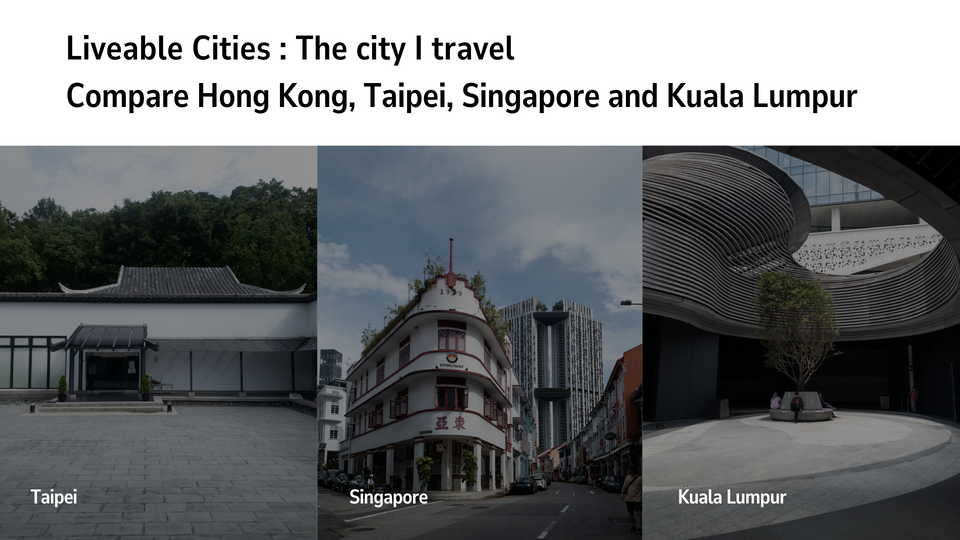
When I was travelling around and observing different cities and people living there. I always wondered if I could move here for 1 to 2 years, will I enjoy life there.
Therefore I came up with these factors for me to evaluate if I want to live in this city.
9 Factors for a Liveable City
- Connectivity & Car Dependency
- Indoor Fitness Facility and Fitness Culture
- Public Space & Parks
- Cafe and hipster neighbourhoods
- Live Music Performance
- Housing Size
- Hiking trail
- Distance and cost to travel to other destinations
- Tax Rates
Connectivity & Car Dependency
- Is it possible to reach the opposite side of the city within an hour?
- How do the train and bus systems complement one another?
- How can public transport address the last-mile problem? (Can you easily travel from the bus stop or train station to your final destination? Are there any bike-sharing schemes available?)
- What is the current adoption rate for public transport?
When evaluating public transport, these are the questions that come to mind. During my time in Kuala Lumpur, I found it surprising that lots of people within my age group own cars (only 20% of the total population uses public transport) and they opt to drive to work daily due to the inefficiencies of the public transport system.
If car ownership becomes a commodity, although it provides freedom, it can also contribute to traffic congestion issues within the city. Consequently, urban planning might prioritize cars over pedestrians and burden young people with financial obligations (Imagine approximately 15% of salary used on car loans and maintenance).
From a shopping mall walk to the subway station
Singapore has slightly better connectivity & public transport than Hong Kong because of its shared bike system and wider pedestrian walkway. Most of the shared bike dock is located next to bus stations and public transport hubs, and the dock area is also a designated area exclusive for shared bikes. Therefore, you won’t see the bike dock in a random place in the city. People can opt to use it to finish the last mile of their commute, further increasing the capacity of the overall transport system.
My ranking on Connectivity & Car Dependency
Singapore > Hong Kong > Taipei > Kuala Lumpur
Indoor Fitness Facility and Fitness Culture
During my travels in Singapore, I came across an app called ClassPass. This subscription-based platform allows users to purchase credits, which can then be used to enrol in fitness classes and gain access to various gyms and fitness studios.
While searching for fitness classes, I noticed that Singaporeans are really into fitness. Throughout the Central Business District and residential areas, there are a multitude of studios offering activities like spinning, yoga, and pilates. That is a huge difference compared to Hong Kong.
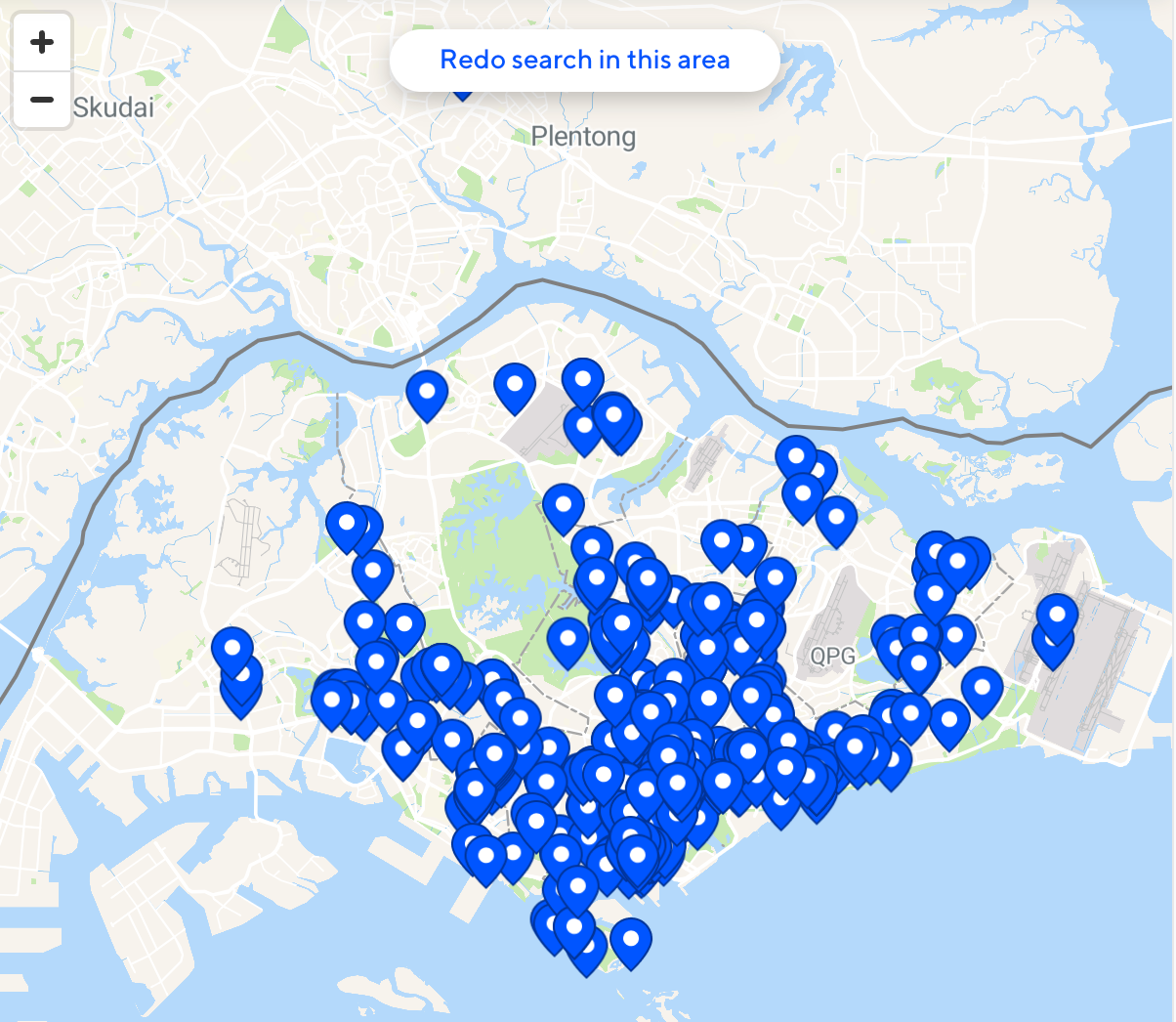
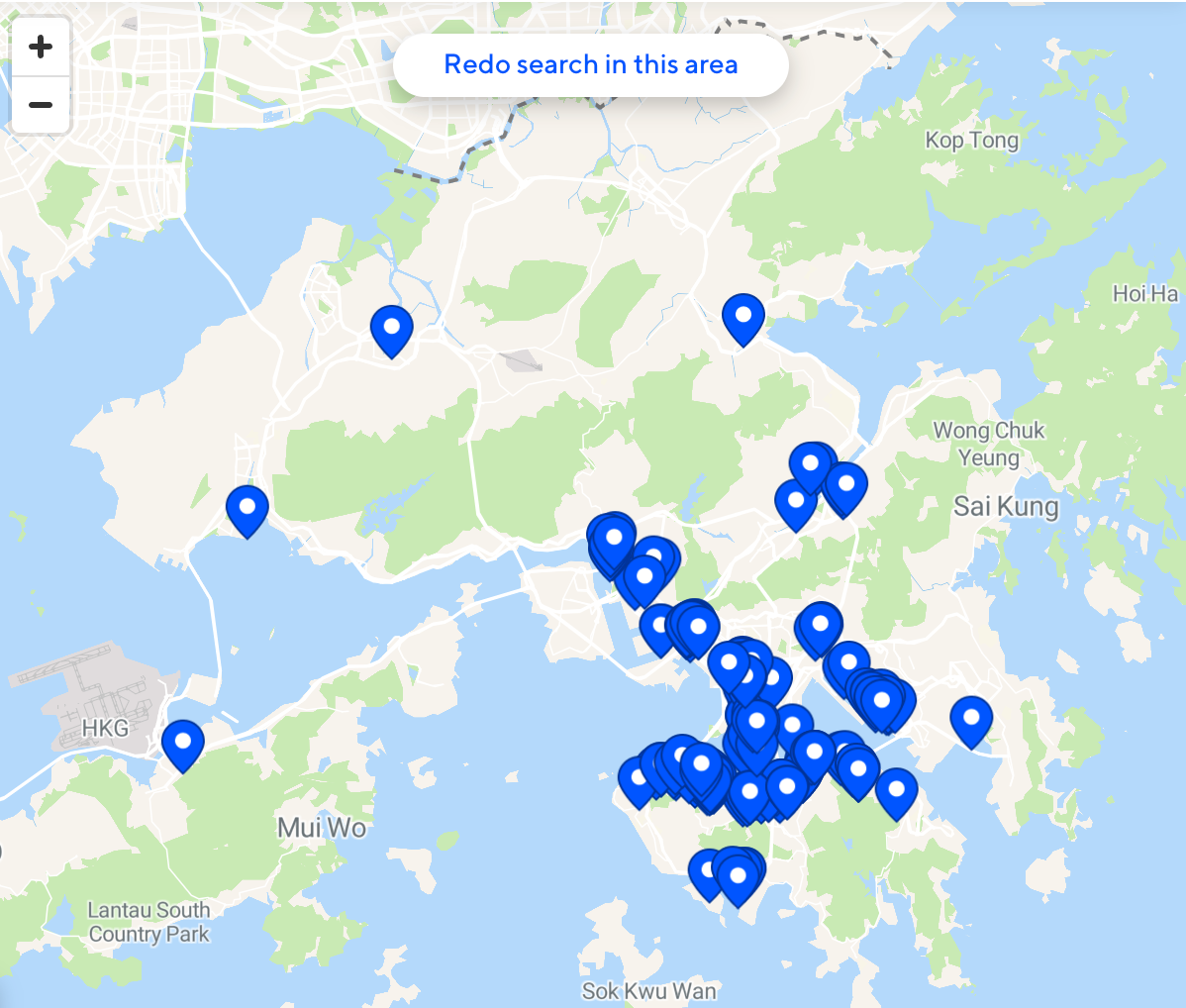
Fitness Studio available in ClassPass in Singapore and Hong Kong
Additionally, there's a fitness company called "The Gym Pod" that has multiple outlets across the city. This company provides the option to rent a tiny gym space equipped with basic equipment for exclusive use.

During my time in Taiwan, I also went to the government gym and was truly impressed by the quality of equipment available. Their facility housed a variety of free weights and training machines, exactly what you can see in 24/7 in Hong Kong. The remarkable part was I only had to pay 50 TWD for an hour of use. Additionally, vending machines outside the government gym offer protein powder for sale. These are amenities I hope the Hong Kong government will consider.
My ranking on Indoor Fitness Facility and Fitness Culture
Singapore > Taipei > Kuala Lumpur and Hong Kong
Public Space & Parks
Public spaces play a vital role in our urban areas, offering numerous chances for people to gather and interact within the community. When these spaces effectively cater to the diversity of city residents, they establish an inclusive social arena where all members of society can take part.
I like public spaces in Singapore, lie the East Coast Park, Marina Barrage, Marina Bay Walking Trail, and more. These public spaces are strategically located throughout the city, making them easily accessible to residents from all neighbourhoods.

What impresses me the most is that Singapore has built an extensive park connector network in the city. This network links small neighbourhood parks (primarily serving residents in a small radius) to a larger interconnected network, connecting them with other major parks (Botanic Garden, Reservoir Park, Garden By the Bay) in the city.
I believe Hong Kong is now catching up on public spaces like West Kowloon, Western District Promenade, and East Coast Park Precinct in North Point. However, in places that aren’t the city centre, there is still a lack of iconic public space.
My ranking on Public Space and Parks
Singapore > Kuala Lumpur and Hong Kong and Taipei
Cafe and hipster neighbourhoods
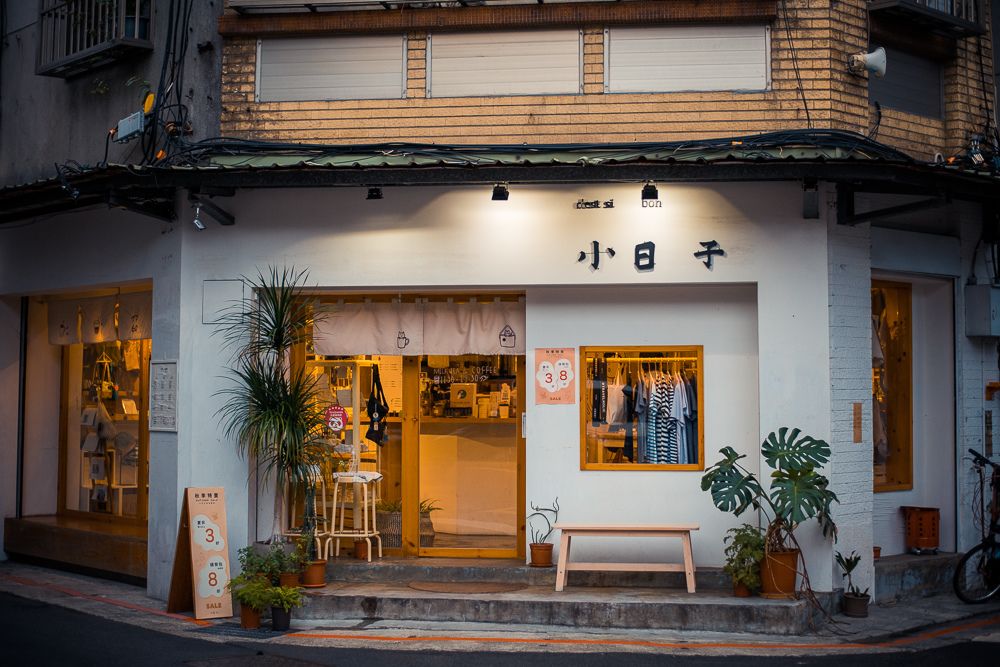
In terms of numbers, Taiwan is sure to win in this area. There are lots of hipster neighbourhoods in 赤峰街 and near 中山 MRT station, where they sell design items, books, and coffee.
Surprisingly, in Kuala Lumpur, there are plenty of places considered hipster neighbourhoods. I have also spent a lot of time there. In Kuala Lumpur, every place is less crowded compared to Taiwan, I guess it's because of Kuala Lumpur's lower rent.
Here are some notable places in Kuala Lumpur for art and culture
- REXKL - Used to be an old theatre and has now been reincarnated as a place for events and exhibitions. Also, have the most Instagramable bookstore in KL.
- GMBB - A mall for art and culture, with many exhibitions and weekend markets.
- The Row - A street with twenty-two 1940s pre-war shophouses that have been turned into restaurants and independent businesses. I highly recommend checking out 103 Coffee in Chow Kit, which is next to The Row.
- A Place Where (APW) - Used to be a printing factory but has now been transformed into a space comprising a collaborative workspace, F&B outlets, event venues, and pocket parks. I highly recommend visiting the barber shop there. The barber is from East Malaysia, but he can speak fluent Cantonese with me. You can find more details about the barber shop on Instagram @52barbers.
- The Zhongshan Building - An urban rejuvenation project that has turned four old blocks into a creative hub with an underground music scene, silkscreen printing, and more.
Interesting Finding: Most of these urban rejuvenation projects are neither led by government nor private companies. The government usually hires a consultancy and project delivery partner, which is responsible for fund distribution, and management and collaborates closely with both the public and private sectors, as well as the community. An example of such a project delivery partner can be found here: Who We Are - Think City.
My Ranking on cafe and hipster neighbourhoods
Kuala Lumpur and Taipei > Singapore > Hong Kong
Live Music Performance
I would say every city has great live houses featuring different types of music.
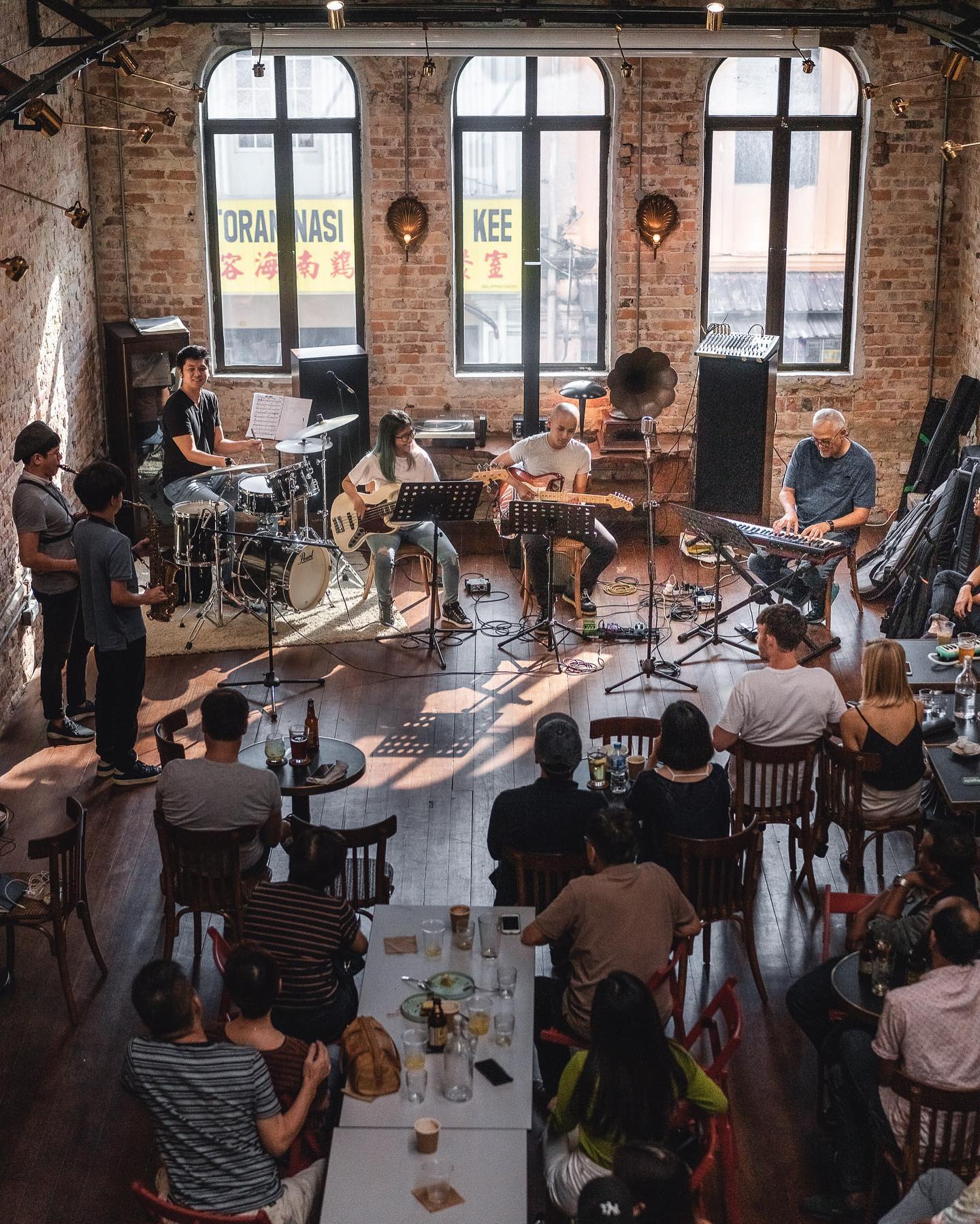
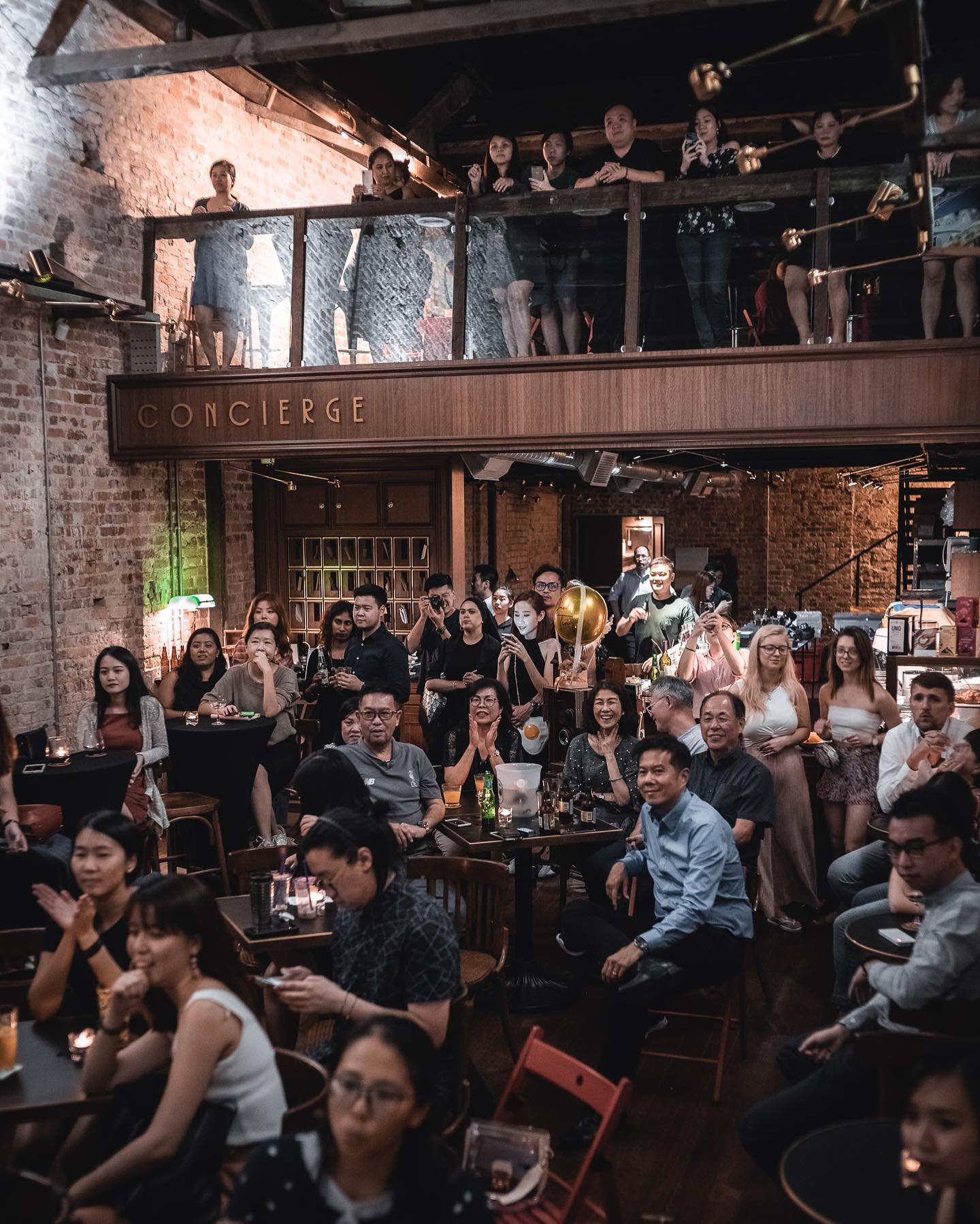
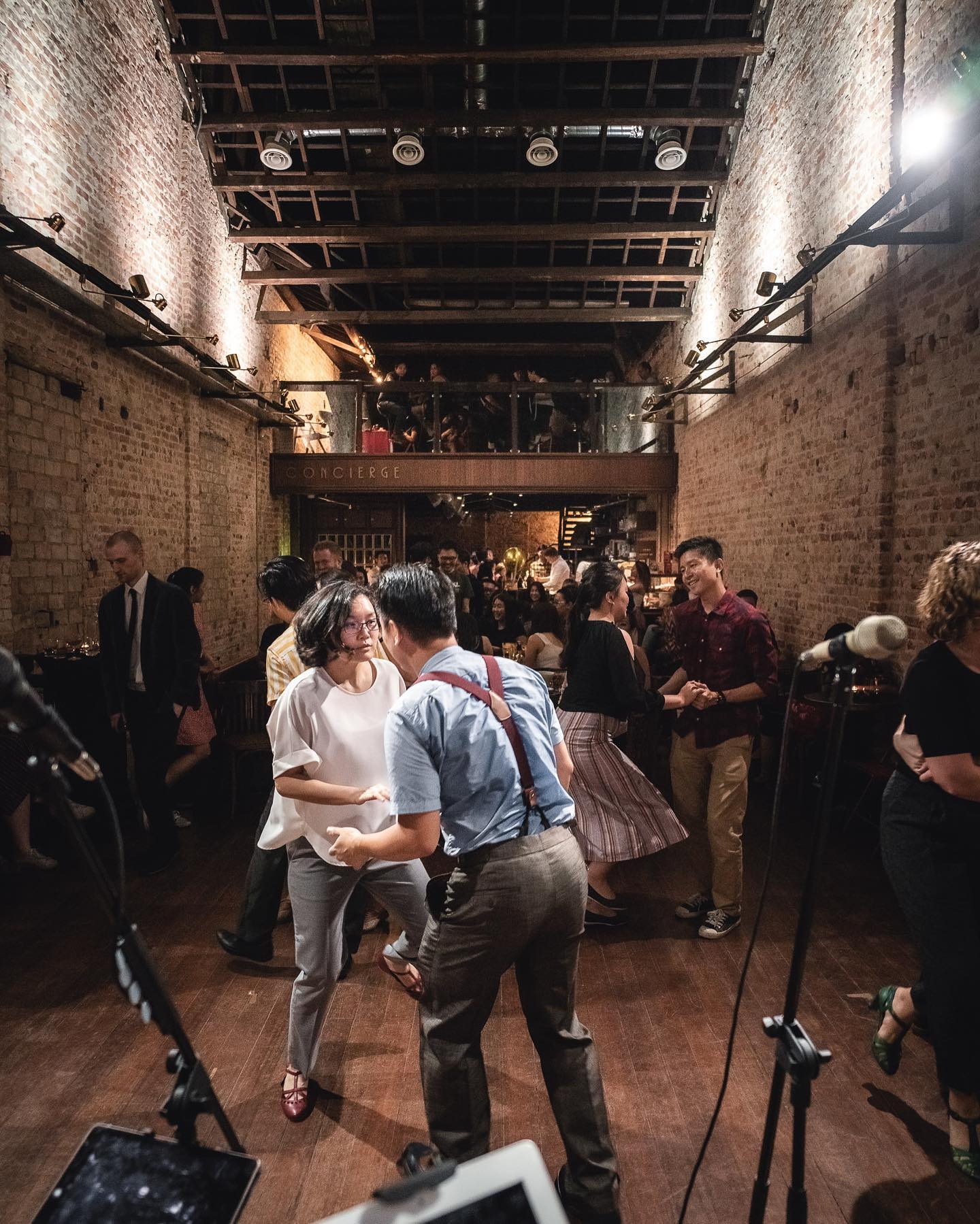
Photo From Jao Tim Facebook
In Kuala Lumpur, there is a live house named Jao Tim, which allows musicians to perform various genres of music, including jazz, pop, big band jazz, and blues. It's also my favourite place in Kuala Lumpur, and I visit there every week when I am in the city.
Singapore also has some pretty good live jazz performances. Check out Simply Jazz by Tin Box. They feature jazz music every night with no cover fee; you only need to order some drinks there to enjoy two sessions of jazz music.
As for classical music, Hong Kong is still the best. We have the Hong Kong Philharmonic, which ranks second in Asia, just behind the NHK Symphony Orchestra. Hong Kong is also a tour destination for world-class orchestras. In 2023, both the Vienna Philharmonic and the New York Philharmonic visited Hong Kong as part of their Asia tour.
So, to sum it up:
- Classical Music: Hong Kong is the best
- Live House: All of these cities have amazing live houses for live music
Housing Size
Space is important to me because I enjoy spending a lot of time at home. Based on what I have observed and heard from my friends, I would rank Kuala Lumpur as my top choice, even though Singapore has spacious apartments. The rent in Singapore is skyrocketing. As for Hong Kong, well, everyone knows about our housing situation.
My ranking for housing size:
Kuala Lumpur > Singapore > Hong Kong (I'm not sure about Taipei)
Hiking trail
Hong Kong stands out as the top choice for hiking among all other countries, and it doesn't require much explanation. Its scenic hiking trails and breathtaking views are well-known. In contrast, Singapore offers limited mountainous terrain for hiking enthusiasts.
Kuala Lumpur, on the other hand, offers more hiking trails compared to Singapore. However, it's worth noting that most of these trails are located a bit farther from the city centre, and you usually need to drive to reach them. While there are more options available, the accessibility factor might require some planning, especially for those without access to a vehicle.
My ranking for hiking trail:
Hong Kong > Kuala Lumpur and Taiwan > Singapore
Distance and cost to travel to other destinations
In Southeast Asia, there is an abundance of captivating cities and countries to explore, especially when you are based in Kuala Lumpur or Singapore. The flight tickets offered by carriers like Air Asia and Scoot are exceptionally affordable, making living in KL and SG even more appealing.
In Taiwan, you can travel within the island while in Hong Kong, even though we have low-cost carriers to various countries, flight tickets tend to be more expensive due to the greater distances involved.
My ranking for distance and cost to travel to other destinations:
Kuala Lumpur and Singapore > Taiwan > Hong Kong
Tax Rates
(Note: Information may not be 100% accurate, please verify)
Hong Kong: Features a progressive income tax system with no capital gains taxes, no dividends taxes (股息稅), and no value-added taxes (消費稅).
Taiwan: Utilizes a progressive income tax system and imposes capital gains taxes on foreign investments once they exceed a certain threshold.
Malaysia: Employs a progressive income tax system and a Goods and Services Tax (GST) of 6%.
Singapore: Enforces a progressive income tax system, with no capital gains taxes. Property purchases by foreigners are subject to higher taxes (60%). The Value Added Tax (VAT) is high and is likely to increase by 1% annually (e.g., 2022: 7%, 2023: 8%, 2024: 9%).
Based on my understanding, the tax comparison would be as follows:
Hong Kong > Taiwan and Malaysia > Singapore
(Please note that this is a general comparison, and individual tax situations can vary widely depending on specific circumstances and changes in tax laws. Always consult official sources or a tax professional for accurate and up-to-date information.)
Final Thought
- There is no perfect city to live in. When I am in Singapore, I appreciate its urban planning and the greenery. However, I don't like how everything feels so well-structured, which can lead to a lack of excitement and surprise in the city. And the tax is very high.
- While I am in Kuala Lumpur, I enjoy the friendliness of the people and the spaciousness of the places, which often feature many cafes and hipster neighbourhoods worth exploring. But I don't find the public transport system enjoyable, and without owning a car, it can be challenging to get around the city.
- In Hong Kong, I appreciate the hiking trails and convenience, but the crowds can be overwhelming.
- Now I find myself wondering if there's a chance to experience the advantages of all three of these places or maybe I can spend 3 to 4 months in each city every year and enjoy the best parts of them.
Member discussion